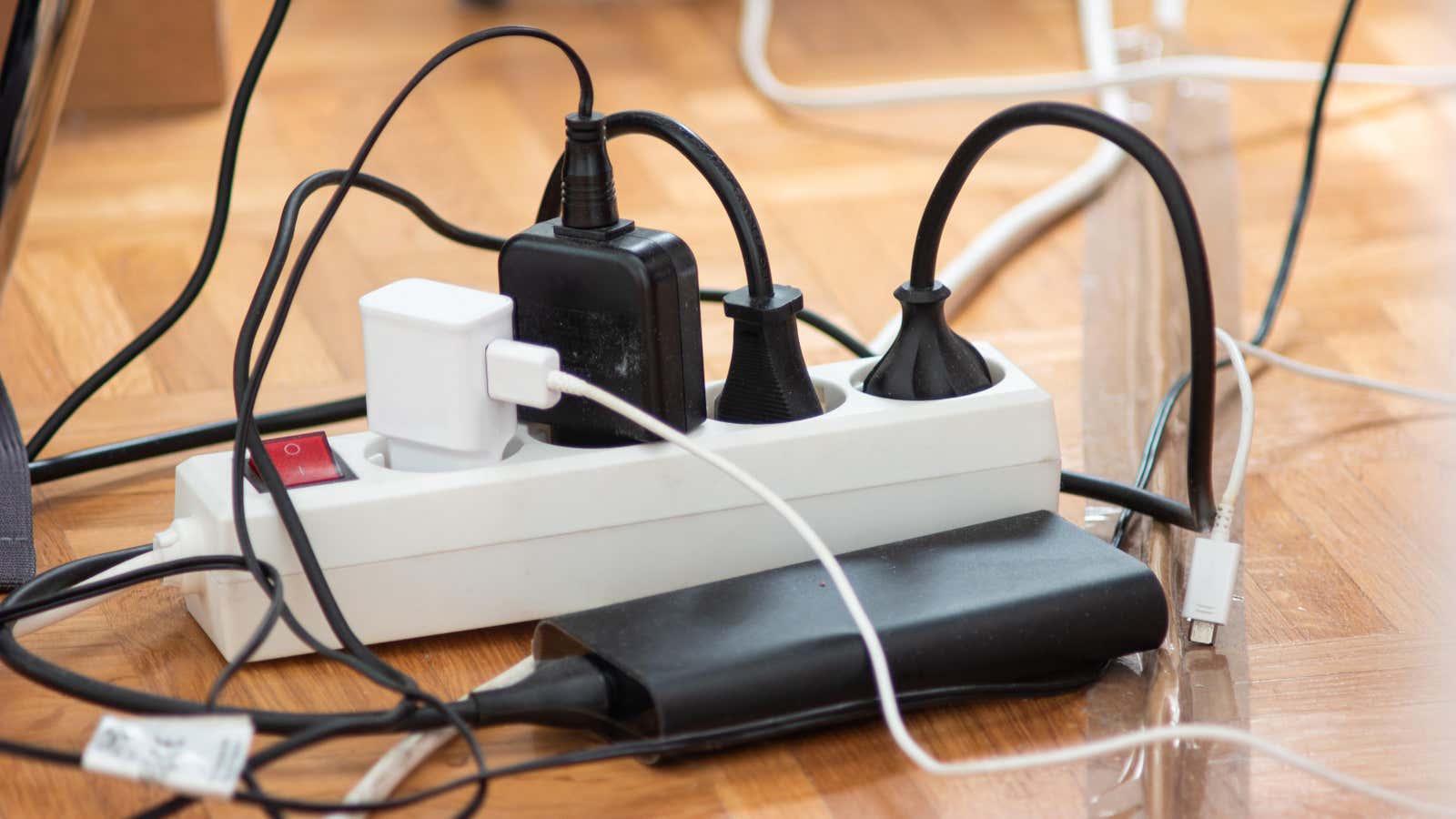Smart Ways to Manage All Your Cords and Cables

With so many devices (and their various accessories) that need to be charged, not to mention lights, appliances and other electronics that need to stay plugged in, cords and cables are probably out of control. Keeping cables clean and tidy isn’t easy, whether it’s the stuff you use every day or the emergency flashlight charger you use twice a year. However, there are some tricks to help avoid confusion. Here are some of the best.
Store cables separately and keep them organized
When it comes to storing cords that you don’t keep plugged into an outlet, keeping them separate is a must. The more they interact with each other, the more likely they are to get confused, even when they are just sitting in a drawer. You can buy a custom case with stretchy pockets to keep your cords perfectly organized, but you can also use a tool box , jewelry organizer , or hardware box you already have to get the job done. Anything that has compartments for small parts will do, so you can get creative with which organizer you use.
Marking is the key
A real tipping point when storing unused cables: Label everything so you remember what it’s for. You might think you remember what a particular cable does when you put it away, but from experience, I’ve carried a box of cords with me all my adult life because I never know which one I’ll need and which one. . each specifically does . If you’re trying to remember which battery/tablet/portable speaker a given tiny cord belongs to, using a marker or label maker to identify the devices the cord works with can really help.
Keep Connected Cords Tidy
If you’re struggling with tangled cords that stay with your devices, this can be more of a challenge since you often don’t have much control over where they’ll be plugged in. Cables can fall behind tables or get lost under furniture, making it difficult to get things to the correct charger. Using a reusable cable wrap that doesn’t stick to anything is a great solution. Attaching cords to a furniture leg so they don’t come undone when you’re not using them is also a good way to keep them together. The slotted cable organizer that fits on your desktop is one solution to this problem, keeping the chargers you use regularly close at hand. You can also use the tray under your desk to store your cables, whether you have a desk or not – they can also be used on a shelf or anywhere you want to set up a charging station.
Run lighting and entertainment cords along baseboards
For lighting and appliance cords that you need to leave on most of the time, using a cord channel in the baseboard can keep things tidy and the cords less visible. If you have some space between the outlet and your cables, this will make it much more streamlined and will also prevent cords from getting tangled. For cords that must be walked on the floor, a rubber cord protector will prevent tripping and prevent damage to the cord from regular foot traffic. (They’re not designed for heavier traffic like furniture carts or handcarts, so if you’re moving or doing renovations, it’s best to unplug power cords while you work.) Instead of packing the cable nest into an extension cord. with a short cord, use an outlet cover so that only one cord can be connected to the outlet instead of several.
kitchen cords
For kitchen appliances, as well as some tools, it is very convenient to use a cord winder to avoid tangles. To keep appliance cords from touching the countertop, you can also use cord clips mounted under cabinets. When you’re not using the appliance, leave an extra clip under the cabinet to hold the plug so it’s handy when you need to plug it back in. For items that are stored in a closet or closet, a Velcro cable tie can help. keep clutter to a minimum.